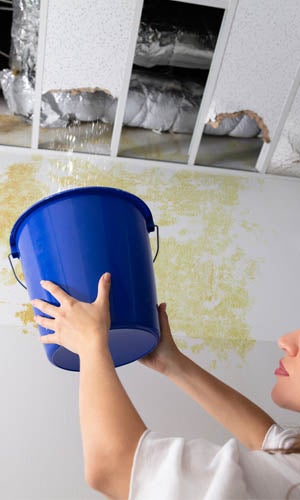Just how do you feel when it comes to Locating water leaks?

Early detection of dripping water lines can minimize a potential calamity. Apart from conserving you money, it will minimize the worry and irritation. The moment you find a leak, calling your plumber for repair services is the most effective solution. However, some little water leaks might not be visible. If you can not identify it with your nude eyes, right here are some hacks that assist.
1. Analyze the Water Meter
Every house has a water meter. Checking it is a surefire way that aids you find leakages. For beginners, switch off all the water sources. Make certain no one will certainly purge, use the faucet, shower, run the washing machine or dishwasher. From there, go to the meter and also watch if it will certainly change. Considering that no person is utilizing it, there must be no motions. That shows a fast-moving leakage if it moves. Similarly, if you detect no changes, wait a hr or two as well as inspect back once more. This suggests you might have a sluggish leak that might also be below ground.
2. Examine Water Intake
If you detect sudden modifications, regardless of your usage being the same, it implies that you have leaks in your plumbing system. An abrupt spike in your costs indicates a fast-moving leakage.
At the same time, a steady boost on a monthly basis, even with the same practices, shows you have a sluggish leak that's likewise slowly rising. Call a plumber to completely check your building, especially if you really feel a warm area on your flooring with piping beneath.
3. Do a Food Coloring Test
30% comes from commodes when it comes to water intake. Examination to see if they are running appropriately. Decline specks of food color in the storage tank and also wait 10 minutes. There's a leakage between the storage tank and bowl if the shade somehow infiltrates your bowl throughout that time without flushing.
4. Asses Exterior Lines
Don't forget to examine your outside water lines as well. Ought to water seep out of the connection, you have a loosened rubber gasket. One little leakage can squander lots of water and increase your water bill.
5. Evaluate as well as Analyze the Scenario
Homeowners must make it a habit to inspect under the sink counters and also even inside cabinets for any type of bad odor or mold and mildew development. These two red flags suggest a leakage so prompt interest is needed. Doing routine examinations, even bi-annually, can save you from a significant problem.
Inspect for discolorations and also deteriorating as the majority of pipelines and devices have a life span. If you believe leaking water lines in your plumbing system, don't wait for it to rise.
Early discovery of dripping water lines can reduce a prospective calamity. Some tiny water leaks may not be visible. Examining it is a proven means that assists you uncover leaks. One little leakage can squander bunches of water as well as surge your water expense.
If you presume dripping water lines in your plumbing system, do not wait for it to intensify.
WARNING SIGNS OF WATER LEAKAGE BEHIND THE WALL
PERSISTENT MUSTY ODORS
As water slowly drips from a leaky pipe inside the wall, flooring and sheetrock stay damp and develop an odor similar to wet cardboard. It generates a musty smell that can help you find hidden leaks.
MOLD IN UNUSUAL AREAS
Mold usually grows in wet areas like kitchens, baths and laundry rooms. If you spot the stuff on walls or baseboards in other rooms of the house, it’s a good indicator of undetected water leaks.
STAINS THAT GROW
When mold thrives around a leaky pipe, it sometimes takes hold on the inside surface of the affected wall. A growing stain on otherwise clean sheetrock is often your sign of a hidden plumbing problem.
PEELING OR BUBBLING WALLPAPER / PAINT
This clue is easy to miss in rooms that don’t get much use. When you see wallpaper separating along seams or paint bubbling or flaking off the wall, blame sheetrock that stays wet because of an undetected leak.
BUCKLED CEILINGS AND STAINED FLOORS
If ceilings or floors in bathrooms, kitchens or laundry areas develop structural problems, don’t rule out constant damp inside the walls. Wet sheetrock can affect adjacent framing, flooring and ceilings.
https://www.servicemasterbyzaba.com/blog/how-to-detect-water-leakage-in-walls/

I discovered that entry on Top leak detection hacks while doing a lookup on the internet. Sharing is nice. You won't know, you may very well be doing someone a favor. Thanks a lot for your time. Please pay a visit to our site back soon.
Comments on “Guide To Water Leakage Discovery In Your Home”